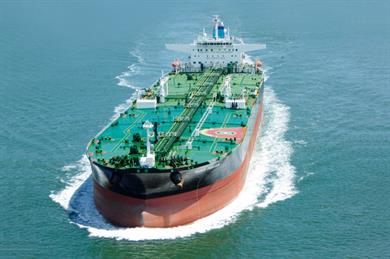 A
As the premier port for bunkering supplying 50 million tonnes annually, Singapore is gearing up for 2020 when the new International Maritime Organization (IMO) fuel regulation kicks in. From 1 January, the IMO will limit the sulphur content in marine fuel to 0.5%, from 3.5%, in its effort to cut emissions of harmful sulphur dioxide. Ships failing to comply could lose their international certification, preventing them from operating as commercial trading vessels.
As LNG is the most viable option for ships that have not installed exhaust gas scrubbers, the MPA has spent S$26 million to make Singapore an LNG-enabled port. According to industry estimates, using LNG to power ships instead of fuel oil or gas oil can reduce nitrogen oxide and sulphur oxide emissions by 90 to 95%.
Some S$18 million, or up to S$2 million per ship, has gone into co-funding the construction of LNG-powered ships. Another S$6 million went to two licensed suppliers, Pavilion Gas and FueLNG, a joint venture between Shell Eastern and Keppel Offshore & Marine, for the construction of LNG bunker vessels to perform ship-to-ship transfer of the marine fuel. The MPA has also spent a further S$2 million to build up the LNG trucking capabilities at the Singapore LNG (SLNG) Terminal to perform truck-to-ship bunker operations.
The MPA has published a list of 49 licensed bunker suppliers that are able to provide IMO 2020 compliant fuels in Singapore. They can also offer fuel grades ranging from marine gas oil, low sulphur fuel oil, ultra low sulphur fuel oil of 0.1% and the 3.5% heavy bunker fuel oil.
Promoting LNG through Focus Group
Singapore is also continuing to promote the use of LNG as a marine fuel through international forum. At the 20th Singapore International Bunkering Conference and Exhibition (SIBCO) 2018 in October, the MPA announced that the Suez Canal Economic Zone Authority has joined the LNG Bunkering Port Focus Group, the first Middle Eastern port to do so.
“The growing membership will strengthen the global network of LNG bunkering facilities and give shipping lines more confidence to invest in LNG-fuelled vessels,” said Senior Minister of State for Transport and Health, Dr Lam Pin Min.
Formed by port authorities in Singapore, Belgium and the Netherlands in 2014, the group’s intent is to enable the uptake of LNG as marine fuel globally by facilitating, among other things, the harmonisation of LNG bunkering standards across its members. The group now comprises 12 port authorities, including Ningbo-Zhousan, Marseille Fos, Vancouver, Jacksonville and Ulsan.
Developing Small-Scale LNG Solutions in Southeast Asia
More LNG infrastructure is being rolled out to ensure operational certainty for carriers. At Asia’s largest oil and gas industry event OSEA2018 in November, two Singapore-based companies, SSB Cryogenic Services and Global Petro Storage (GPS) Singapore, signed a S$50-million agreement to expand and develop small-scale LNG supply chain solutions in Southeast Asia.
The collaboration aims to promote the transportation, distribution and storage of LNG in small-scale aspect, to locations with limited access to energy sources due to inadequate distribution infrastructures and poor interconnectivity of gas pipelines. Smaller-scale supply solutions using small-scale LNG membrane vessels, satellite hubs and ISO tanks are inherently suited for locations where the demand for energy sources is not adequately serviced.
“As part of the collaboration, SSB will identify and introduce project opportunities to GPS,” said SSB’s managing director Peh Lam Hoh. “GPS, with an extensive knowledge in the energy industry and specialising in project investment and asset management, will own and operate the assets and infrastructures. With the new SSB technical service centre in Singapore to provide support for cryogenic equipment, we strive to push forward the development of small-scale LNG supply chain solutions, serving the small- and mid-scale customers in this region.
The global push for cleaner energy source and IMO’s cap on fuel sulphur content have also created opportunities in LNG bunkering, intermediate storage and break-bulking activities.
Said Eric Arnold, CEO of GPS Singapore, “GPS believes that gas is the fuel of the future and thus is focused on developing optimal onshore and/or offshore infrastructure needed to allow suppliers to access the respective demand centres.”